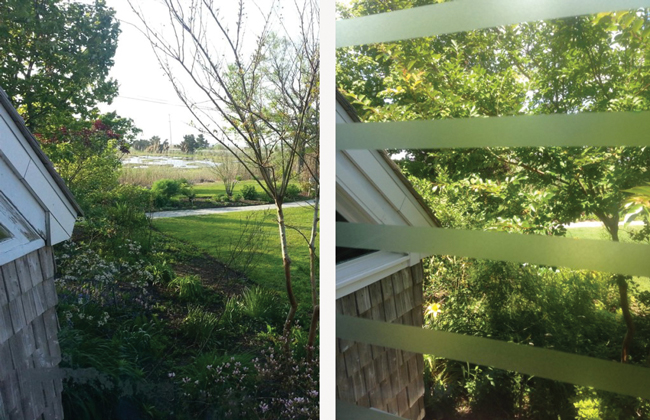By Dr. Lisa Ferguson, Director of Research and Conservation
Each year in the United States, an astonishing 100 million – 1 billion birds are estimated to die after colliding with homes, public buildings, and highrise buildings. Of particular risk to birds are windows and glass panes, which are near invisible to the birds as they flit about searching for food, cruise to evade predators, or become attracted to brightly lit windows. Their surroundings are reflected in the expanses of glass, creating a seamless yet risky scene for navigation. The issue of window strikes for birds has been an active field of study, with The Wetlands Institute’s board member Dr. Daniel Klem of Muhlenberg College leading the way, and there are many simple recommendations for making your home or office less of a danger zone for our feathered friends. New advances in window design are on the market, and several low-cost solutions are available for upgrading your existing windows for birds.
Over the summer, The Wetlands Institute applied horizontal stripes to our lower level office windows where bird strikes were known to occur. These stripes, pieces of bird tape from American Bird Conservancy spaced two inches apart, make the windows visible to quick-moving birds. Since taking this measure, our staff has not reported a single bird strike – and the view from our building is even more enjoyable with this safeguard in place. We will continue to evaluate our needs and options for retrofitting other windows across our building to make our grounds a safer place for birds.
For more information on the issue and steps to reduce the risk of bird collisions at your home or office, check out the American Bird Conservancy (abcbirds.org/abcprograms/policy/collisions/glass) and Fatal Light Awareness Program (flap.org).

